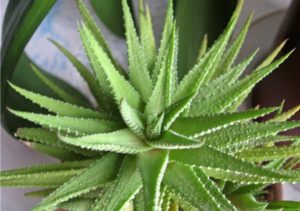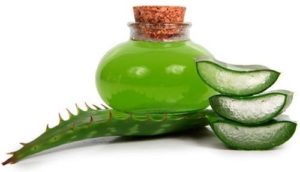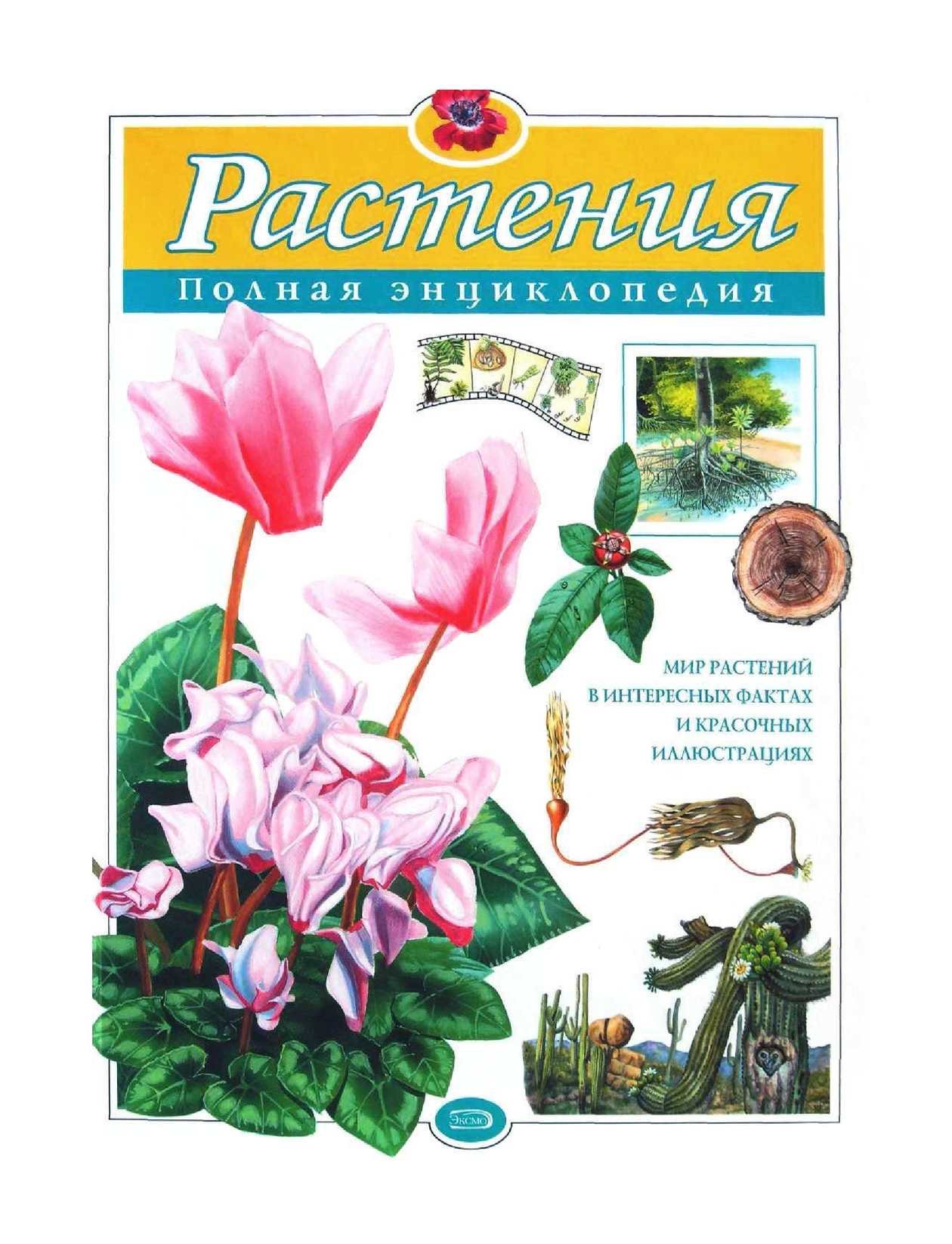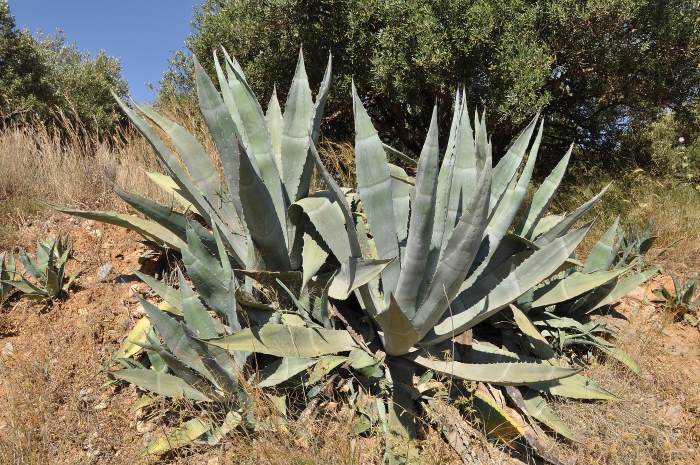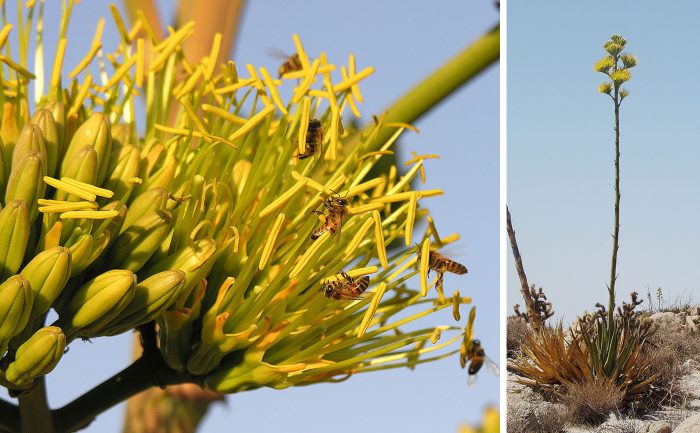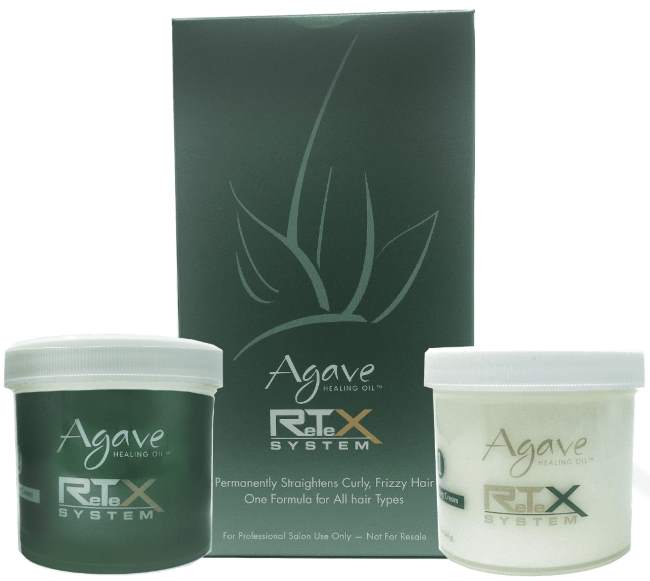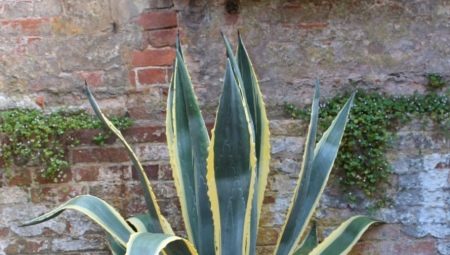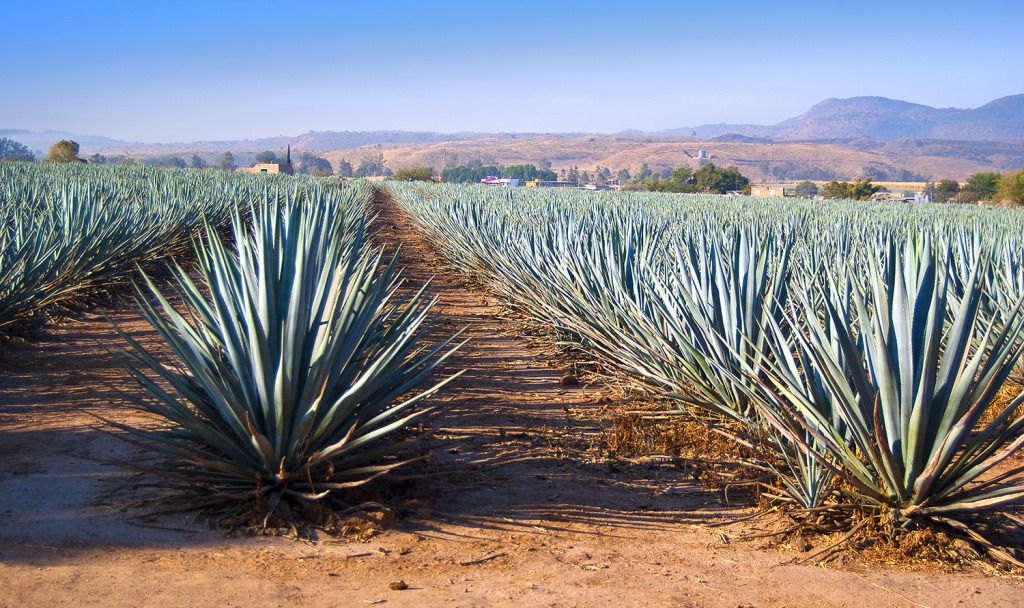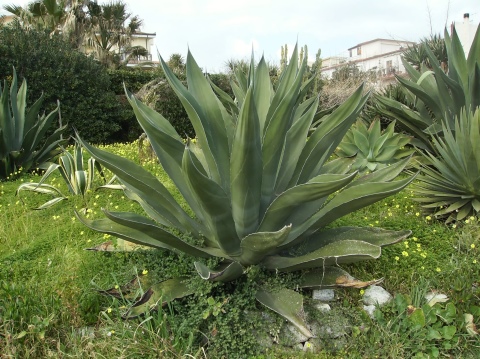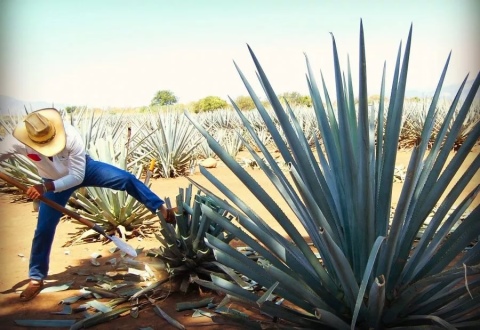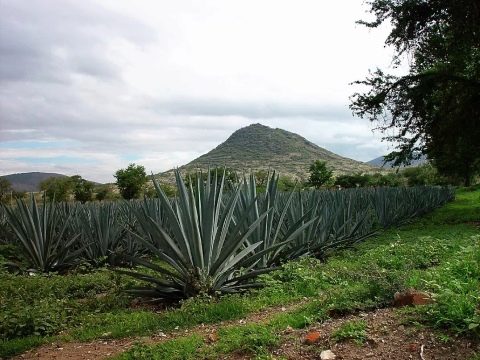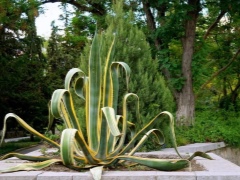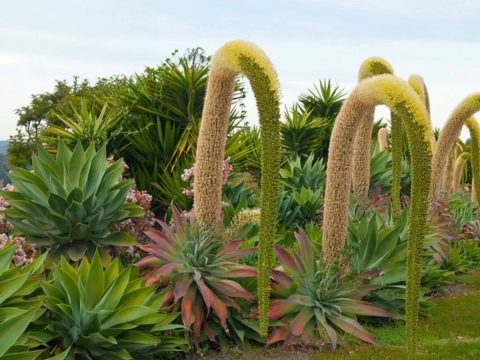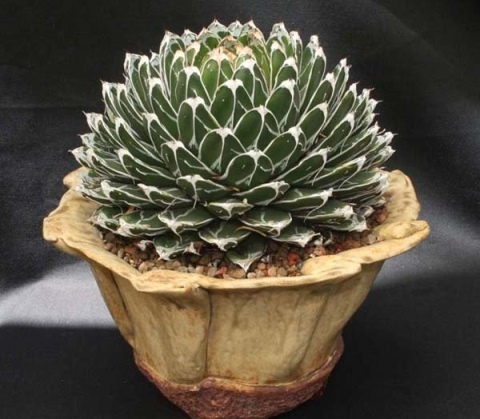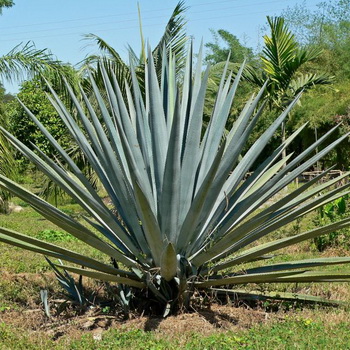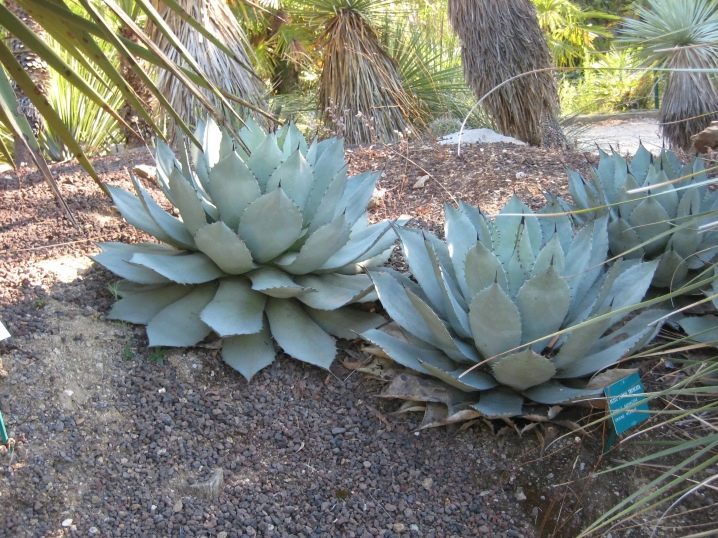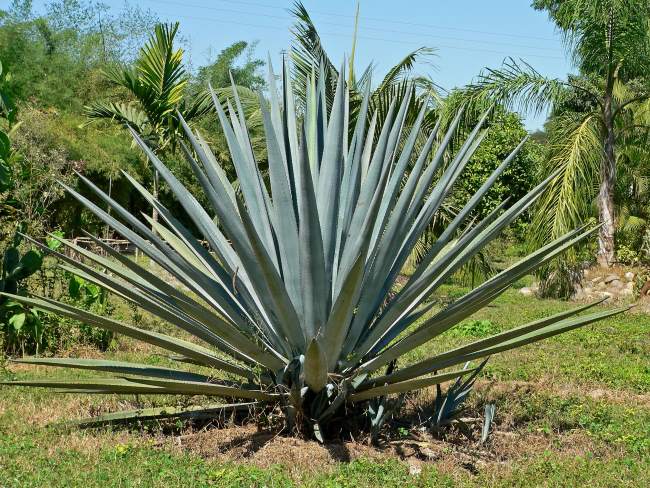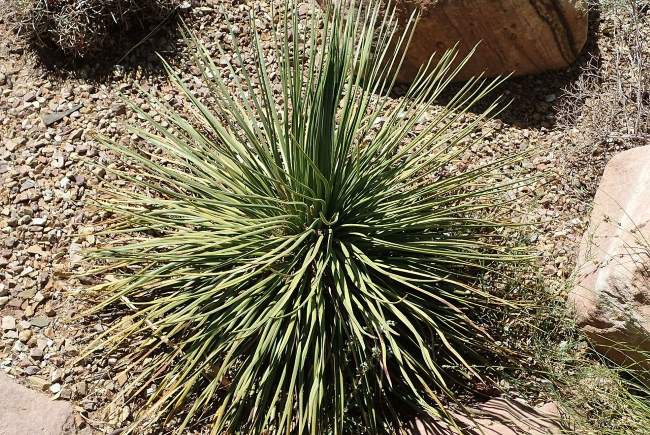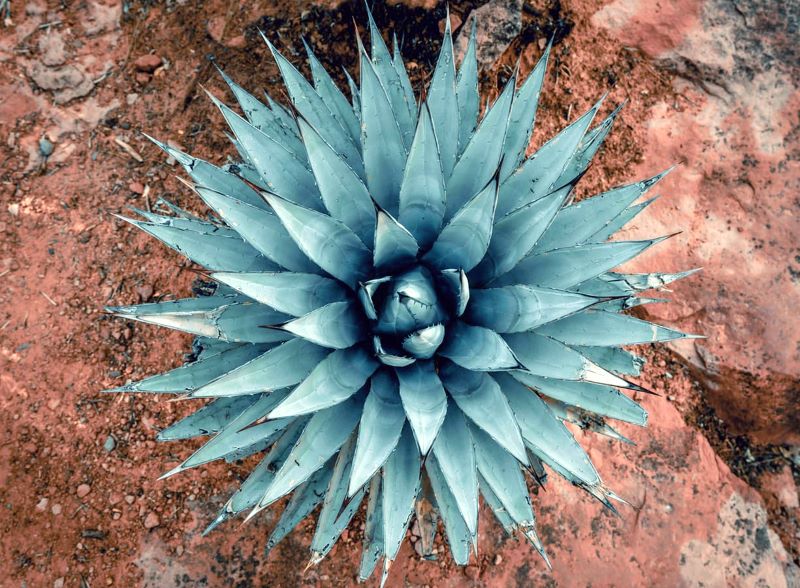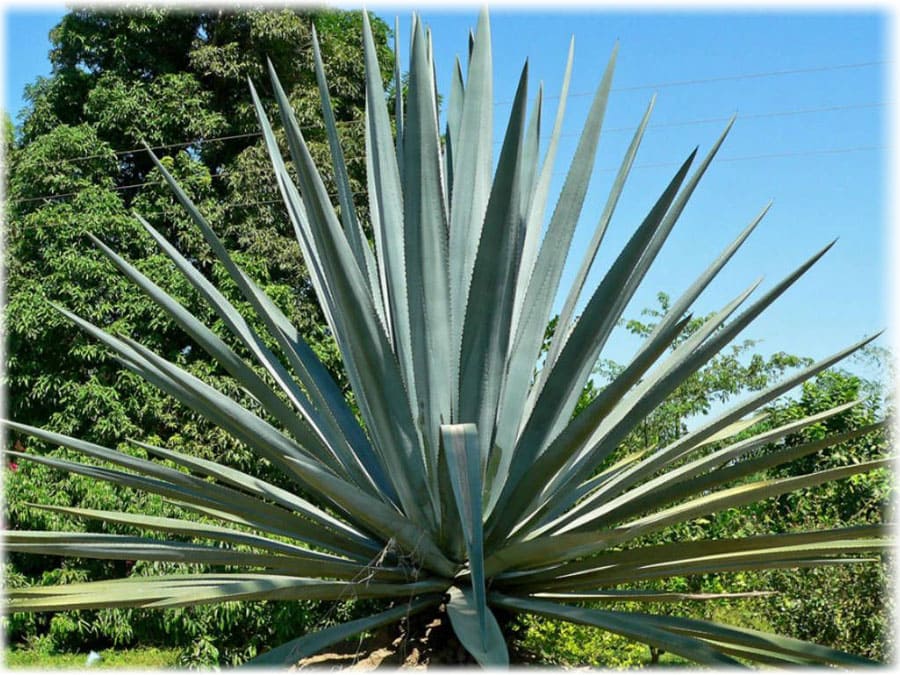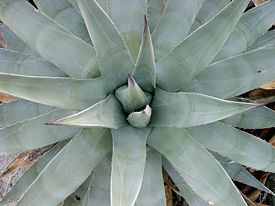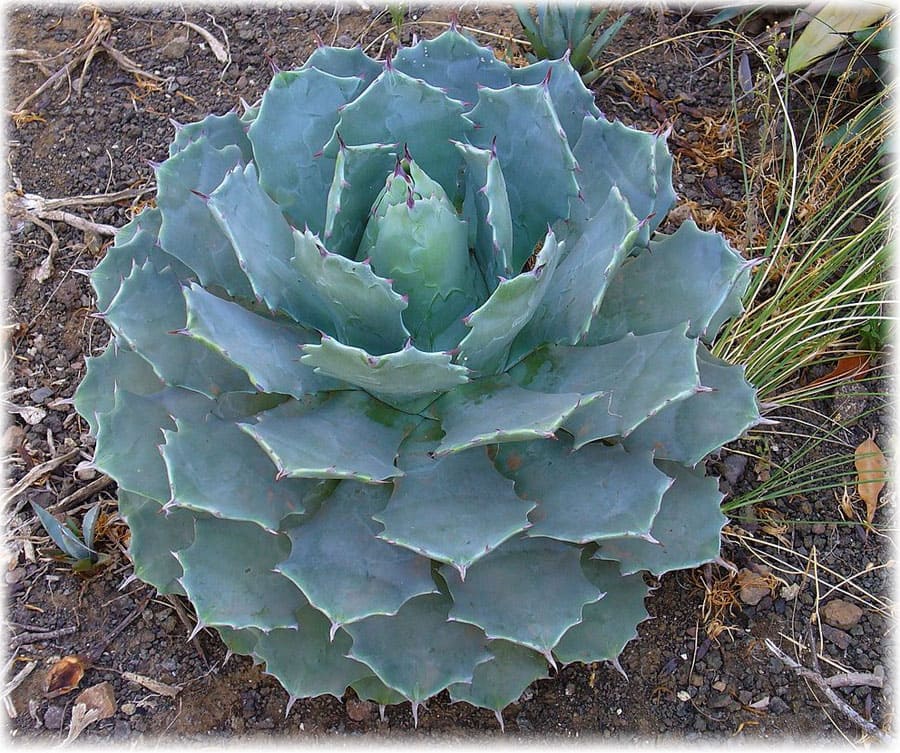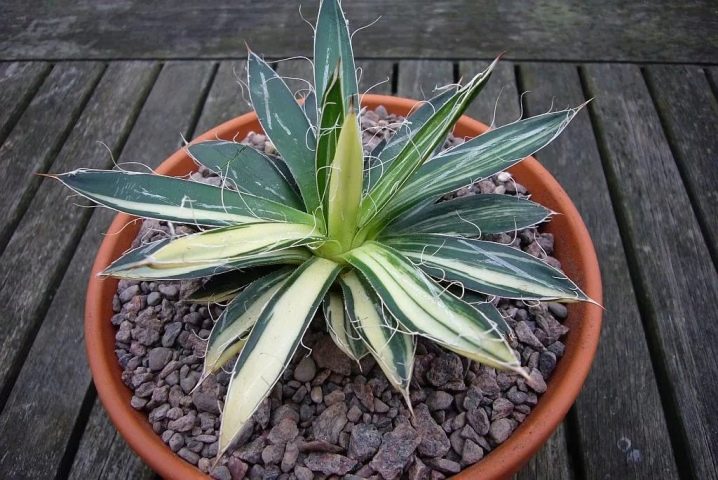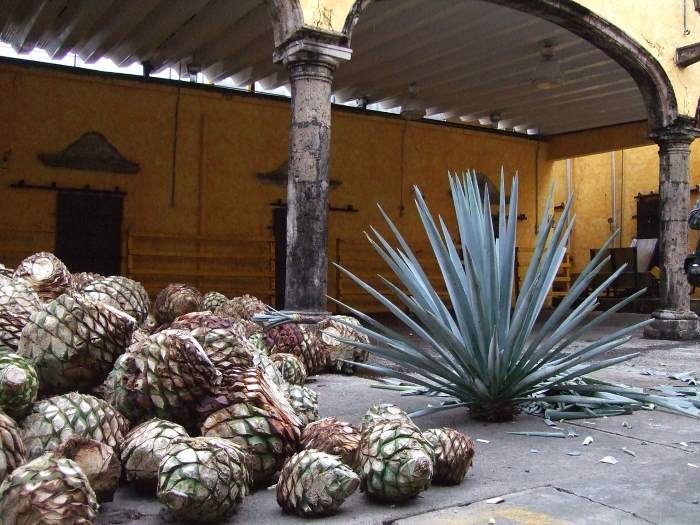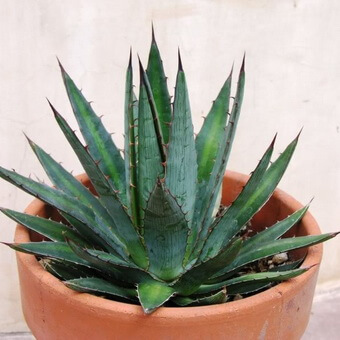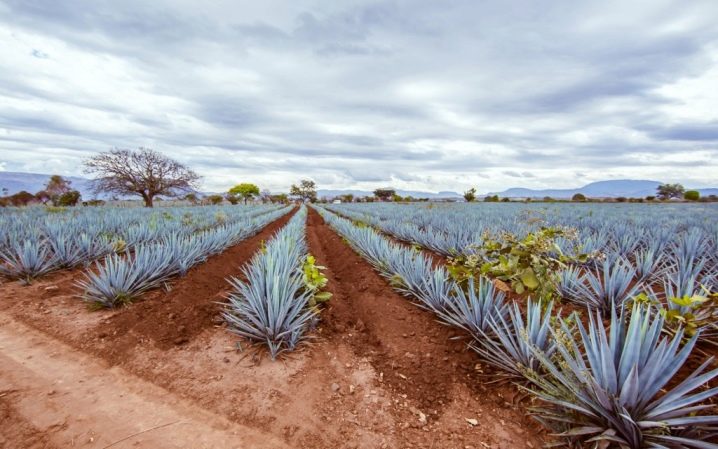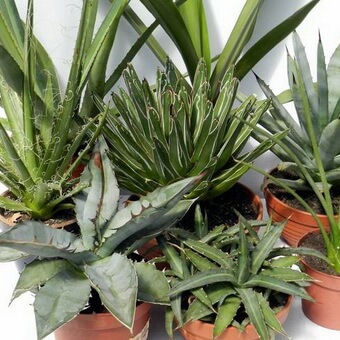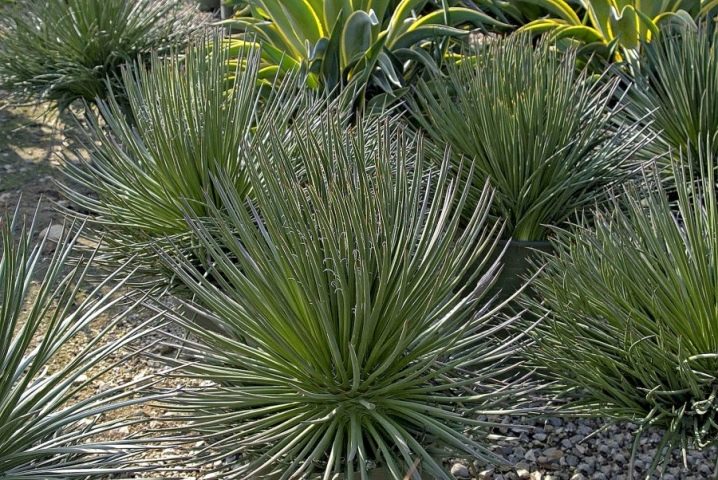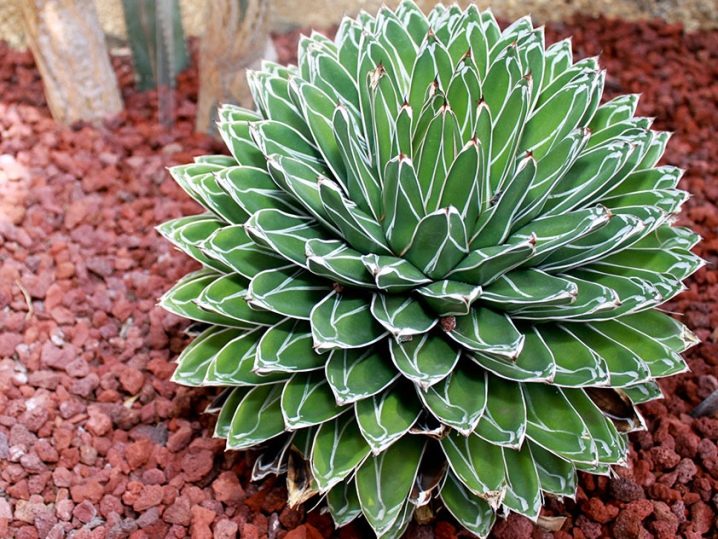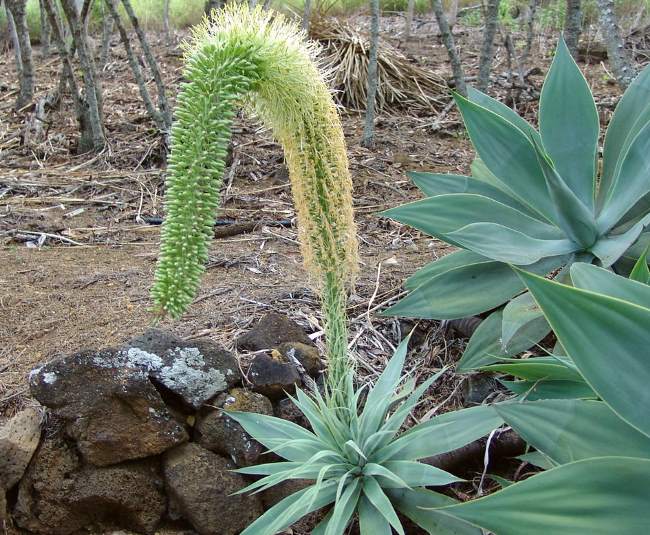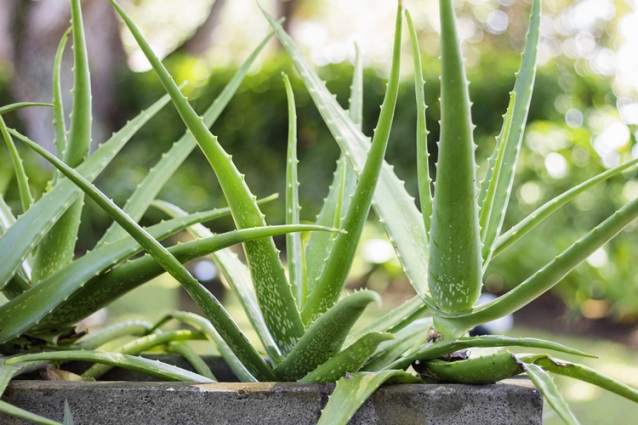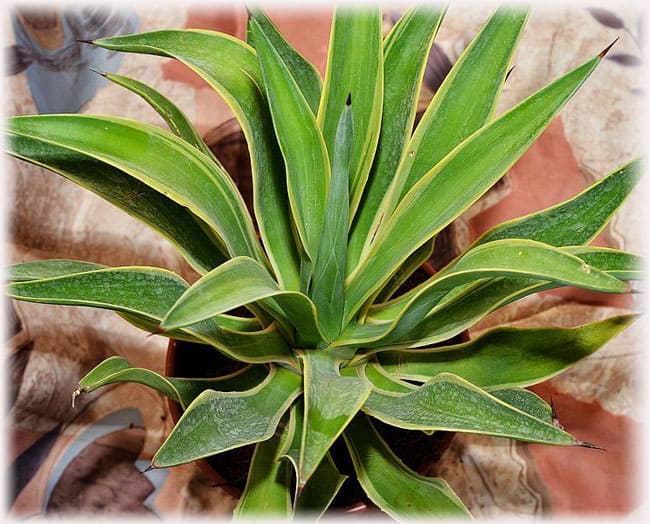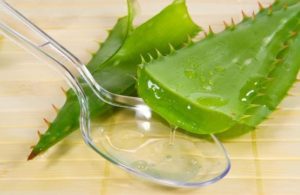Common species of the genus Agave
We propose to briefly dwell on the most popular types of this succulent:
- Agave filamentous or filamentous, less often - Agave filifera. Differs in thin sheet plates (up to 2-4 centimeters). Their length is up to 30 centimeters. The shade is the original matte green, with a white border around the edges.
Forms loose-type rosettes. At the tip of each leaf there is a brown thorn, which eventually turns gray. A distinctive feature of the species is that there are dry fibers along the edges of the leaves.
- Double-flowered agave (Agave geminiflora). It is also called “with two colors”. It can grow up to 200 leaves, they are usually linear, rigid, they have a dark green color with convex edges.
Flowers reach up to 5-6 cm, which grow on tall inflorescences.
- Agave vilmoriniana (Agave vilmoriniana). Quite a large plant, resembling an octopus in appearance, more than a meter high.
The leaves are oblong in shape, which gradually taper and curl up into a long tip, dropping to the ground. They are painted in a bluish color with a marble image.
- Agave titanota (Agave titanota). Medium-sized plant. It grows up to 60 centimeters in height, has thick, pale shoots, bluish leaves. A broad-leaved species of agave - A. titanota
The leaves are wide (up to 12 cm), but narrow at the base with protruding teeth.
- Agave potatorum or drunkards (Agave potatorum). Parameters - from 30 centimeters to fairly large forms - up to 1 meter.
The leaves can be different, there are denticles along the edges.
- Agave blue or textile (Agave tequilana). Probably the most famous type of agave. It can reach a height of almost 5 meters. Blue agave (Mexican)
It has open rosettes, as well as leaves of a light green shade close to blue. Blooms with yellow buds. It is only from this type of culture that the well-known alcoholic drink Tequila is made.
- American agave (Agave americana). A perennial representative with succulent thick greenish leaves. The most popular species in North America is Agave americana.
There are sharp thorns along the edges, with a sharp thorn. It blooms with a greenish tint interspersed with yellow. Reproduction mainly by seed method or by offspring. The most common species in North America.
- Agave attenuata. It has a rather powerful stem, reaching up to 15 centimeters in diameter. Height - up to one and a half meters.
The rosette has a bluish green color with gray tints. The leaves reach up to 0.7 meters in length. Flowers are greenish with yellow.
Habitat
It is believed that a cactus is an unpretentious plant in terms of the fact that it does not need a lot of water, but in fact this also means certain obstacles to growing. Most thorny species grow in nature in hot and dry climates, respectively, they do not like either coolness or excessive humidity.
Pay attention to where most of these plants grow in North and South America - they choose the Mexican deserts, as well as dry Argentine steppes, but they cannot be found in the Amazon jungle
Having figured out that even bushes and trees with leaves can belong to cactus, it should not be surprising that the typical growing conditions for such species can differ significantly. Some species grow well in the same humid tropical forests, although in appearance they do not resemble their closest relatives in any way, others are able to climb high into the mountains, up to 4 thousand meters above sea level, and there are no longer typical deserts at such an altitude.

The same applies to the soil on which the home flower will be grown. The classic prickly cactus from Mexico grows in the desert, where the soil is not fertile - soils there are traditionally poor and light, with a high content of mineral salts.However, any "atypical" cacti growing in fundamentally different natural conditions usually choose heavy clay soils. It is the unpretentiousness of the classic Mexican "thorn" that is the reason that cacti have become so popular as a houseplant. They do not require special care, no fertilization is needed, even the irrigation regime can not be strictly observed - this is very beneficial for a busy person who may not appear at home for a long time. As we already understood, when choosing a cactus, it is still worth showing a certain amount of care, since exceptions to this rule, although not very popular, exist.
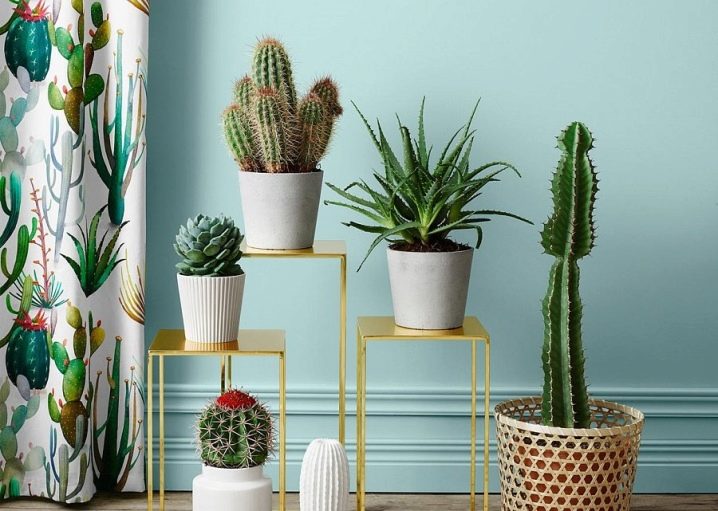
Some species do not like to be located next to each other, in nature they grow only at a considerable distance, while others, on the contrary, tend to grow in dense thickets.
Homeland of origin of the agave plant
Agave (Agave) belongs to the Asparagus family.
Other names: Century plant - century plant (agave), American aloe-American aloe, American sisal - American sisal.
The birthplace of the agave plant is Mexico, Central America, the USA and the Caribbean islands.
The popular popular name agave was given to agave for the delusion that it blooms once every hundred years. American aloe agave is called for the external similarity of these plants, as well as for the same widespread use of agaves in the American continent as aloe in the Old World.
In ancient Mexico, agave played a leading role in economic life, culture, even religion. The well-being of the Aztecs depended on the agave harvest. In their legends, the goddess Magway, that is, the agave, protected pregnant women from becoming wild animals. To do this, it was necessary for a certain time to put the leaves of the miraculous agave on the face of the pregnant woman.
This plant is so widespread in Mexico that the country got its name in honor of the agave - “the place of the agave”.
Agave plantations are cultivated in Mexico, where the plant is not allowed to bloom. When a young bud becomes visible in the middle of the rosette, it is excised. In the formed hole, sweet juice is collected, which was supposed to go to the formation of the stem, flowers and fruits.
This juice contains 10% sugars and in Spanish is called aquamiel, which means "sweet water" or "honey water". This juice is scooped out 3 times a day. The plant is able to produce sap for 8 to 10 months, until the leaves are completely dry. For the entire period from one plant alone, you can collect up to 1000 liters of juice.
Agave reduces the number of pathogens in the air by 69%, as well as fungal spores.
The sap of the plant is allergic and can also cause contact dermatitis. In the scientific literature, there are cases of the appearance of purple dermatitis, similar to purple vasculitis, on the legs of people a few hours after cutting down large plants of American agave, that is, due to contact of agave juice with the skin. Damage to small blood vessels occurs due to exposure to calcium oxalate crystals and saponins. Treatment is carried out by taking antihistamines and applying saline compresses to the affected areas. Systemic symptoms disappear within a day, and after 7-10 days, skin manifestations also decrease.
Reproduction
There are three ways you can propagate a blue agave:
- seminal;
- sheet;
- children.
Each method has its own characteristics, so it is worthwhile to dwell on each of them in more detail.
Seminal
The technique is laborious, but the seeds germinate better, and the plants turn out stronger than with other growing methods. The first thing to do is purchase seeds. Many stores offer seed mixtures such as not worth buying, because different varieties require different conditions and soil. Buy only one variety of seeds. The seed size usually ranges from 2 mm to 1 cm.
As a rule, agave seeds are sown in early March.The soil for planting will require sandy, close to the natural habitat of the agave. For more saturation, clay or gravel can be added to the soil. To make sure that the substrate is completely disinfected and free of weeds and fungi, it is usually calcined. To do this, the soil is placed at a temperature of about 60 degrees and kept for half an hour.
To plant seed, you need a shallow but large container. The substrate is put there, then the container is placed on a dish with water. When the soil is saturated with liquid, you can start sowing. Large seeds are simply laid out, small ones are sprinkled nearby. After that, the seed is sprayed with water and sprinkled with medium-sized sand.
In order for the seeds to sprout, the temperature will have to be kept quite high - during the day it should be up to 30 degrees Celsius, at night 20
It is very important to protect tiny sprouts from direct ultraviolet radiation - for this they are usually covered with a transparent mesh. If the temperature does not correspond to the recommended ones, make a mini greenhouse
The container with seedlings should be ventilated at least 2 times a day, while it is imperative to observe whether midges, fungi, and mold have appeared. If everything is done correctly, then you can see the first shoots of agave a little more than 2 weeks after planting the seeds.
Sheet
The advantage of this method is the growth rate of agave, it takes root well and grows quickly. To do this, select the largest leaf from an adult plant and cut it off with a sharp knife at the very base. The cut leaf should dry well - you will need to wait about 4-5 hours. After this time, the leaf is planted in a container filled with sandy soil or a mixture for succulents.
For the plant to take root well, try to keep the temperature within 21-24 degrees Celsius. You should not make greenhouses or cover the blue agave, you should not be zealous with watering either. A healthy leaf will be accepted in two weeks, then its active growth will begin.
Children
This technique has both undeniable advantages and disadvantages. Reproduction of agave by children is the key to obtaining a strong culture with developed roots. However, the old plant will no longer grow.
To propagate an agave in a similar way, its children, located at the base of the trunk, are necessarily separated with a knot. Then the resulting specimens are well sprinkled with crushed charcoal and dried in the same way as in the previous breeding option. Dried children are planted in wet sandy soil.
The optimum temperature for growing children is 20 degrees Celsius, while the plants should not be covered or sprayed. Three days after disembarkation, the first accurate watering is organized - pouring is slow, in a very thin stream. If necessary, the plants are fenced off from direct sunlight.
2.What is agave - description
The genus has about 300 species, of which about 50 were cultivated and brought to Europe around the 16th century, they were used as ornamental plants. Currently, agaves are successfully grown outdoors on the Black Sea coast.
There is a belief that the plant blooms only once, which is not far from the truth. If the peduncle is located in the center of the rosette - at the so-called growth point, then after flowering and fruiting, the plant dies, that is, this plant belongs to monocarpics. However, if the peduncle is located on the side, then the plant continues to live and develop.
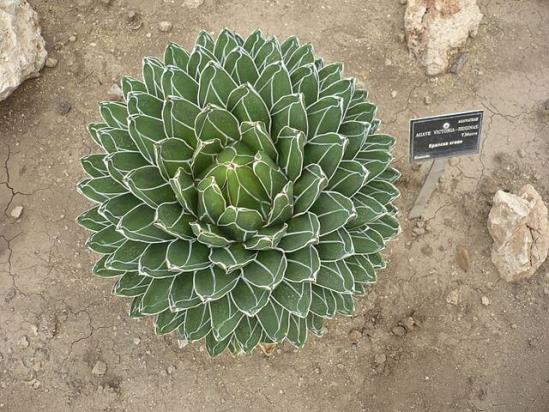
The word "agave" comes from the Greek "amazing", "excellent." The name is due to the fact that during the flowering period, the succulent really is a unique sight. The peduncle of the plant rises 8 meters in height or more.
In areas where the minimum temperature is at least 8 ° C, for example in the Crimea, the Caucasus and America, it grows well in the open field.In more northern regions, the bush is cultivated in rooms and greenhouses; it can be exposed to the open air in the warm season.
Agave is not only an ornamental plant, it is used in the textile industry, papermaking, for the manufacture of alcoholic beverages in Mexico - pulque, mezcal and tequila, in medicine to protect against insect bites.
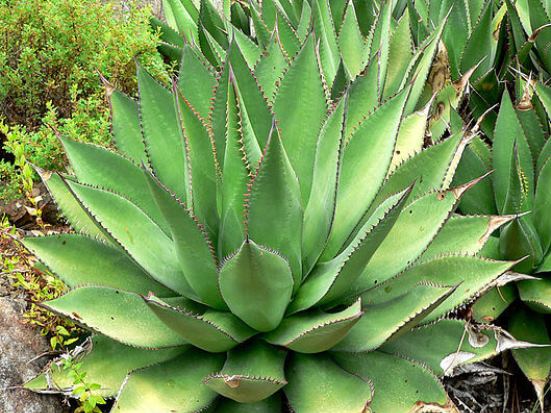
Agave
The genus agave includes more than 300 species that are common in the Caribbean, Central America and the southern United States. Agaves were brought to Europe in the second half of the 16th century. and quickly spread as exotic, ornamental plants. In the Mediterranean countries and on the Black Sea coast of the Crimea and the Caucasus, they are grown in open ground, in temperate and northern latitudes, as greenhouse and indoor plants.
The most widespread in culture was American agave. The name of this plant is called Mexico, which means the place of the agave.
The homeland of this amazing plant (Latin agauos means amazing) is Mexico, North and Central America. More than 400 species are known that grow in tropical and subtropical regions of America. Agaves are widespread throughout the Mediterranean.
It is a perennial, stemless or very short-stemmed succulent plant. The leaves are collected in a basal rosette, often very large, fleshy, hard, wide or narrow, ending in large, strong spines; most species have strong curved or straight thorns along the edges of the leaves. The color of the leaves is gray, green, bluish-green; in some species, yellow or white stripes or whitish threads chipping off from the edges are carved along the edges of the leaves. The leaves are covered with a thick waxy coating.
Agave blooms once in a lifetime - after flowering it dies, leaving numerous root suckers. Blooming agave is a wonderful and rare sight. On a huge, up to 10 m, peduncle, an inflorescence is formed in the form of an ear or panicle with thousands of yellowish funnel-shaped flowers.
Views:
American agave, decorated variety - Agave americana var. mediopicta Trel.
Agave brown-yellow - Agave lurida Ait.
Agave potatorum - Agave potatorum Zucc.
Agave compressed - Agave stricta Solm.
Agave terrible - Agave horrida Lem.
American agave, var. yellow-edged - Agave americana L. v. aurea-marginata Trel.
Agave brown-yellow - Agave lurida Ait.
Queen Victoria's Agave - Agave victoriae-reginae T. Moore
Agave Parras - Agave parrasana Berger.
Why agave is useful for the body
The plant contains several compounds with protective beneficial properties. It contains saponins that bind to cholesterol and can help lower overall cholesterol levels. These compounds can also inhibit the growth of cancerous tumors, which are undoubtedly beneficial.
In cosmetology, agave is used to improve the condition of the facial skin.
Agave also contains inulin, a type of fiber that is a probiotic or beneficial type of bacteria. A natural plant, unlike syrup, also provides the body with a good dose of fiber and a lot of fiber, which can reduce the risk of constipation.
Wet evergreen rainforest
The main characteristics of African humid evergreen tropical forests are their extremely lush growth, high species diversity and complex structure. The diversity is often so great that one tree species cannot be identified as dominant within an area.
Relatively large trees predominate, such as ironwood, iroko and sapele. Forest trees grow so close that their crowns overlap to form a canopy that limits the amount of light falling under them. Several large trees, called emergent trees, erupt above the thick dome.
A layer of smaller trees grows under the main dome.A few small shrubs and grasses grow near ground level, but most herbaceous plants and other perennials are epiphytes that grow on other plants.
Almost every accessible place, trunks and branches of trees have epiphytes that create a unique ecosystem. All this dense plant growth is supported by the monsoon climate, which receives over 1,500 mm of precipitation annually, most of it in summer.
Vines
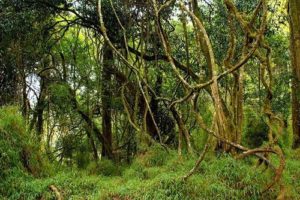
Vines are large, woody vines that cling to trees, and many of them hang to the ground. They were made famous in the Tarzan films. The fruits are eaten by birds or monkeys, and the seeds are deposited in their feces on branches high in the canopy. The seeds germinate and the stem is directed down towards the ground. Once the stem reaches the ground, it forms a root system; additional stems then develop and grow upward along the tree trunk.
Ficus stranglers
After many years, the strangler ficus can wrap around the tree so thoroughly that it will not allow water and nutrients to get to its "victim". Eventually, the host tree dies and rots, leaving a hollow trunk.
Epiphytes
Epiphytes are plants that grow or are permanently attached to other plants - forophytes.
 Mosses, or Bryophytes
Mosses, or Bryophytes
The most common epiphytes are bryophytes - lower plants associated with mosses and lichens, a symbiotic combination of algae (or cyanobacteria), and a fungus.
 Ferns
Ferns
The most abundant higher plants are ferns and orchids. As these plants colonize tree branches, they gradually trap dust and decaying materials, eventually resulting in a thin layer of soil that other plants can use.
The number of epiphytes can be so great in some cases that tree branches break from their weight. Epiphytes are not parasites (although there are some parasitic plants that grow on tree branches); they simply use host trees for support.
Rainforest litter plants
Grasses are almost entirely absent from the forest floor of the African rainforest; those that grow there have much wider leaves than usual. Some litter grasses can grow in deep shade under a canopy, sometimes so adapted to low light that they can be damaged by direct sunlight.
Some of the popular houseplants are derived from them, so they don't need intense sunlight to survive. However, the greatest number of plants grows under the breaks of the canopy, where more light penetrates.
Agave care at home
When growing a crop in a room, the needs of the plant must be taken into account. Agave grows in the natural environment in the highlands of Mexico, which determines the requirements for maintenance. You can buy a succulent in a garden center, after which it is necessary to transplant it into a fresh substrate, try not to touch it for a while, until the adaptation period has passed.
Agave care at home includes:
- maintaining an optimal microclimate;
- watering;
- top dressing;
- transplant;
- wintering period;
- protection from diseases and pests.
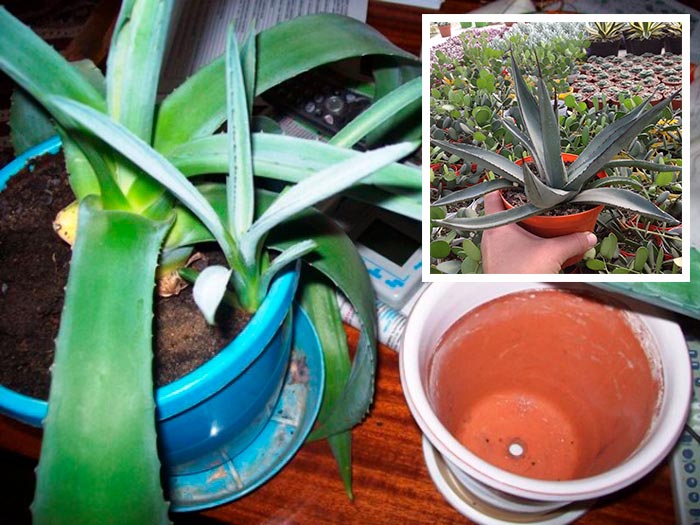
Illumination
Succulent is not very demanding for sunlight. It grows and develops equally well both in direct sunlight and in diffused lighting. Additional lighting may be needed only on northern windowsills in winter. At home, it is not recommended to often rearrange the agave to a new place, since abrupt changes in the environment, including the amount of light, will lead to a weakening of the immune system.
Temperature regime
The climatic conditions of the natural areola of the succulent distribution suggest high temperatures. A cold snap below -10 ° C, even during hibernation, can lead to the death of a houseplant.
Caring for a flower at home implies a temperature regime as close as possible to the natural environment.
How to water properly
Succulents accumulate moisture in leaf plates, therefore they tolerate dry periods better than waterlogging. Watering the culture requires moderate, carried out as needed. In winter, once a month is enough if wintering conditions are met. A light sandy substrate is used for the plant, so the liquid does not stay in it for a long time. The procedure is carried out using settled water at room temperature.
Agave care at home does not require spraying the leaf outlet. In addition, the ingress of moisture inside causes rotting and death of the bush. Dust from the leaves should be wiped with a slightly damp soft cloth, avoiding large drops from entering the outlet. Dry indoor air is most suitable for natural conditions, so additional air humidification is not required.

Top dressing
During an active growing season, indoor flowers must be watered with nutrient mixtures once a month. A large amount of fertilizer should not be allowed to enter, as this will negatively affect the agave. For the procedure, it is recommended to use universal complex formulations for cacti and succulents. Apply the solution to the root, combine the operation with watering.

How to transplant
When kept at home, young specimens are transferred to a new pot every spring. After 4 years, the procedure is carried out as needed, when the flower container becomes too tight for the rhizome.
Choose a pot for agave from heavy materials, for example, clay, because the above-ground part is heavy, capable of turning over a light container. It is advisable to purchase a soil mixture ready-made for cacti and succulents, but you can also collect it yourself from improvised means:
- a mixture of clay and sod soil - 3 parts;
- sheet land - 1 part;
- river sand - 1 part;
- as fertilizers - a small amount of bone meal and charcoal.
Pour expanded clay drainage with a layer of 3 cm on the bottom of the disinfected container, soil substrate on top. Carefully transfer the agave, trying not to damage the leaves and roots, sprinkle it with earth around the edges. The socket must not be buried; it must remain at the same level. Florists recommend covering the soil surface with pebbles so that the root collar remains open.
Features of caring for agave at home
Agave is an unpretentious plant at home, so even a beginner can take care of it.
Temperature
For agave, a room temperature of 18-24 degrees is suitable. In summer, she tolerates heat well. In winter, the plant needs a colder place. To do this, it is taken out, for example, on a balcony with a temperature of 6-8 degrees.
Lighting
Agave room needs a place where the sun's rays will hit it for several hours every day. She is a light-loving plant. In some cases, you can add light using artificial sources.

Agave care
The plant requires 14-16 hours of lighting per day.
Watering
You need to pour water at the root. If droplets come into contact with the outlet, rot may form. The soil needs to be dried a little more than half in depth. In winter, when you move the plant to a cool place, you need to water less often.
Important! Agave can be grown hydroponically
Spraying
For agave, drought is a common occurrence, so it does not need to be sprayed additionally. In the garden, the agave must be protected from heavy rain and dampness.
Humidity
Additional moisture is not required for agave. The indoor air must be dry. The room needs to be ventilated, but without creating a draft.
Priming
In the soil for agave, you need to add 30 percent drainage so that there is no stagnation of moisture. The soil is selected as for a succulent plant. A soil with a pH of 6.8 to 7 is suitable for agave.
Top dressing
Fertilize agave in spring and summer.Selected top dressing as for a cactus or succulent. Fertilizers are applied every month of the spring-summer period.
Additional Information. In contact with the sap of the plant, you need to protect your hands with gloves, as the skin can be damaged and contact dermatitis occurs.
If agave is properly looked after indoors, it will delight the owner for a long time with its attractive appearance.
In winter
For wintering, the plant must be moved to a cold room. For agave, coolness is more favorable. This helps to maintain its attractive appearance. At room temperature, agave's appearance deteriorates: it stretches, the leaves become thinner, and the plant gradually weakens.
At a temperature of 5-10 degrees, all processes in plant cells slow down. Agave is dormant. So she tolerates winter well.
3.Agava at home
3.1 Growing agave
Indoor agaves are easy-care plants suitable for beginner growers. In the summer, it is advisable to take out to fresh air in a sunny place. Dried old leaves must be removed in time. Winter care is about providing a cool and fairly dry dormant period.
3.2 Flowering time
Flowering is a truly impressive sight, but it rarely blooms at home, the plant must reach 10 or even 30 years in order to bloom. During flowering, many species emit an enchanting aroma, but flowering can be over in just half an hour. After a period of flowering and fruiting, the plant may die due to the withering away of the rosette. Peduncle up to 8 m long is crowned with a huge panicle inflorescence with thousands of flowers of various colors. The flowering period varies between cultivars and species.
3.3 Reproduction
Daughter rosettes, lateral offspring in April - June. Seed propagation is possible in early spring at 20 - 25 ° C, but it will take a lot of time. The germination process takes about 2 weeks at a temperature of about 22 ° C. The lateral offshoots take root in the sand, the cut must be dried within 1 - 2 days.
3.4. Agave transplant
They are transplanted in the spring into a larger pot with very good drainage, large adult specimens are transferred once every 3 years or simply change the top layer of the substrate to a fresh one. Old specimens can be replanted after 5 - 7 years. In no case, when planting, do not deepen the root collar - it must remain above the ground.
3.5 Containment Temperature
Agave as a houseplant is usually kept at room temperature. If possible, it is necessary to provide a winter period of rest in a cool (6 - 8 ° C), but very bright place. Cold wintering will allow the bush to gain strength for further growth in the new season.
3.6 Watering the agave
Sufficiently drought-resistant plant, in winter almost before drought, once every 1 - 2 months. In the summer - as the earthen coma dries up, about once a week. In no case should water get into the plant and stand in the outlet. Small agaves need regular watering, and as they age, plants will find it easier to tolerate drought.
3.7 Soil
As for desert plants - with a high content of coarse sand, well-drained with expanded clay, perlite or brick chips - garden soil, coarse sand, peat. Alkaline enough - pH 6.8 - 7.
3.8 Diseases and pests
Mealybugs, aphids, spider mites, thrips, rarely scale insects. Root decay is possible with excessive watering.
3.9 Home Maintenance - Lighting
The plant is light-loving, only some species can tolerate low light. From a lack of light, the leaves can droop and become weak. Indoor agave is a succulent plant that can be grown for a long time without natural light, which makes it possible to use them for landscaping rooms without windows (halls, corridors,bathrooms, etc.). It is recommended to use fluorescent lamps as a light source for these crops, which should be turned on for 14-16 hours a day.
3.10 Top dressing
A low concentration fertilizer is suitable for a plant, poor in nitrogen - about ½ of the usual one in the spring and summer. Feed about 2 times a month, it is better not to overfeed.
3.11 Spraying
The plant does not need spraying and easily tolerates dry room air, however, it welcomes the ventilation of the room.
3.12 Purpose
Queen Victoria agave, other dwarf species are most suitable for indoor keeping due to their compact size. Young specimens of other large species are also grown. They are very beautiful, both placed alone, and in composition with other succulent plants. They feel great in winter gardens and greenhouses, on sun-drenched balconies and loggias. The plant is a tapeworm.
3.13 Note
With proper care, a potted agave flower is a long-liver. The juice of some agave species has irritating properties - if it comes into contact with the skin, it can cause contact dermatitis. Agave juice has an antiseptic, diuretic, disinfectant and laxative effect, and in addition, its use causes a diaphoretic effect and lowers body temperature. Agave is used in medicine as a wound healing and anti-inflammatory agent, for example, for burns. The fiber obtained from agave leaves is used in the textile industry, as well as for the production of paper, ropes and ropes. The plant releases special substances into the air - phytoncides, which help fight bacteria and viruses.
Care
Agave grows well at home. These are excellent indoor plants, among them the beauty of agave marginate, felifera, and Vilmoren agave stands out. Almost all types are quite unpretentious. In spring and summer, with strong sunlight, they do not require shading.
Attention! If there was not enough light all winter, these succulents need to be taught to its abundance gradually, this is especially true for young plants. Choosing the right place in this case can significantly improve their health.
In winter, it is better to transfer succulents to a cool, but bright room, reduce watering. The preferred temperature for them at this time is 4–10 ° C. If desired, the plants can be highlighted or even kept completely under artificial lighting (16 hours a day).
Carefully! Watering should be taken very seriously. It is impossible to "fill" the plants, but it is not recommended to leave them on the "dry ration"
In summer, watering should be regular, but extremely moderate. In winter, the mode depends on the average room temperature. If the house is warm, water it 2-3 times a week. If it is around 10 ° C, it is recommended to water no more than once a week.
Top dressing is carried out in the summer, once every three weeks with appropriate fertilizers.
Transplanted into a soil mixture consisting of 1 pieces of leafy land, 3 - clay-turf, and one sand.
Mature plants are transplanted once every two to three years.
Young every year.
Difficulties with their reproduction, as a rule, do not arise. They grow easily from seeds collected in nature in February or March, and the seedlings appear quite quickly - within a week. Freshly prepared cuttings dried for 2 hours and offspring are suitable.
Possible problems when growing agaves are gray rot disease and root rot with an incorrectly selected watering regime. The agave plant is damaged by scale insects and mealybugs.
In this video, be sure to admire the beautiful collection of variegated agaves and listen to expert tips on caring for them:
Photo gallery
The plant develops quite quickly. Leaves sometimes reach three meters in length. At the same time, they are so strong that they are difficult to bend, since the rind is very hard.The edges of the leaves are covered with thorns, and the tips are pointed in the form of a long sharp needle, which in ancient times was used to sew products from thick fabrics.
And how does agave bloom in its natural habitat? In the 10th year, the plant grows a huge stem 12 m high. This amazing peduncle, which grows almost before our eyes. It can grow 3-5 cm per day. At the top is a giant inflorescence, which resembles a brush of 3 thousand yellowish, lily-like flowers. This inflorescence, which attracts many bees, blooms for a month.
The inflorescence is a large, five to eight meters long branching panicle. The flowers are large, seven to nine cm long. Forms root suckers. Blooms in late May for two to three weeks. The seeds ripen in November. The plant dies off after fruiting; with damage to the growth cone, offspring from the lower axillary buds often develop.
After flowering, the plant, having given all its strength to future offspring, dies. After flowering, the leaves become shriveled, the plant completely loses its appearance. However, a dying rosette gives a young plant at the very root collar, which continues the life of this plant farther.
Unpretentious, bright, attractive plant. It develops slowly.
At home, in natural conditions, agave blooms once every 10-15 years; in open field culture - once every 12-15 years; in tub culture - once every 20–30 years. Blooms in late May for a short time - 2-3 weeks. The seeds ripen in November. After fruiting, the plant dies off. The offspring develop from the lower axillary buds.
In indoor conditions, it rarely blooms.
Below are photos and names of agave species.



